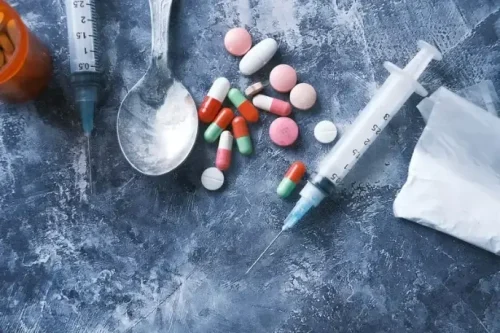
People with diabetes who plan on drinking alcohol should check their blood sugar levels before and up to 24 hours after drinking. They should also check these levels at bedtime to ensure that they are stable before sleeping. The risk of hypoglycemia is why experts advise people with diabetes not to drink alcohol if their blood sugar is already low. If a person chooses to drink, they should always eat at the same time and include carbohydrates, such as fruits, vegetables, or grains, in their meal. Keep reading to learn more about how alcohol affects people with diabetes, including types of alcohol and how alcohol may cause hypoglycemia, or low blood sugar levels.

Alcohol and type 2 diabetes: The role of socioeconomic, lifestyle and psychosocial factors

Doctors strongly encourage people with diabetes to engage in regular physical activity because it reduces blood sugar. However, exercising, drinking alcohol, and taking blood sugar-lowering medication could cause hypoglycemia. Diabetes and alcohol consumption are the two most common underlying causes of peripheral neuropathy. Among diabetics, the prevalence of neuropathy with obvious symptoms (i.e., symptomatic neuropathy) increases with increasing disease duration. That increase in prevalence was most apparent in patients with a disease duration of less than 4 years. Other researchers observed that the prevalence of neuropathy in type 1 diabetics increased in a linear fashion with the alcohol amount consumed (Mitchell and Vinik 1987).
What to Know About Drinking Alcohol If You Have Type 2 Diabetes
People with blood sugar issues should avoid consuming mixed drinks and cocktails. These drinks are often full of sugar and empty calories and may increase blood sugar levels. This is because the liver has to work to remove the alcohol from the blood instead of managing blood sugar levels. Alcohol consumption can also lead to situational unawareness of low blood sugar levels. However, the organization recommends that females with diabetes limit their consumption to one drink per day and males limit their consumption to two drinks per day. The problem is that the liver cannot perform both functions at the same time.
ALCOHOL CONSUMPTION AND RISK OF T2DM
In T2DM, insulin sensitivity is reduced, while insulin secretion may be increased, resulting in hyperinsulinemia, especially in the early phase of the disease, or decreased, in comparison to the healthy subjects, with normal glucose tolerance [24]. The priming effect of alcohol-enhanced insulin secretion in pancreatic β-cells might be caused by an early defence mechanism, which is used to compensate for alcohol-inhibited basal insulin secretion. In contrast, a limited number of studies have reported deleterious effects of alcohol on β-cells, in which alcohol inhibited the insulin secretion [25]. As a result of β-cell dysfunction and inadequate insulin release, postprandial and subsequently fasting glucose levels increased, due to incomplete suppression of hepatic glucose production and decreased efficiency of liver and muscle glucose uptake. It might be anticipated based on the above-mentioned in vitro data that the acute in vivo administration of alcohol would decrease the circulating insulin concentration. While there are scattered reports of relatively mild alcohol-induced hypoinsulinemia [23], the majority of studies show basal postabsorptive plasma insulin concentrations do not differ significantly from control values [85,107,108].
Potential confounders
- If you have questions about consuming alcohol during Trulicity treatment, talk with your doctor or pharmacist.
- As a metabolically active tissue representing 40%–45% of total body weight, skeletal muscle has been the focus of many of these studies.
- This long-term retrospective cohort study used data from 2008 to 2021 obtained from the Panasonic cohort study database, which included data on annual medical health checkups, medical costs, medical history, and mortality conducted by Panasonic Corporation, Osaka, Japan.
- In addition, T2DM patients are typified by a decreased fat oxidative capacity and elevated levels of circulating free fatty acid [27].
In addition, we checked our health registers for persons with a prior hospitalization due to alcohol-related diagnosis between 1972 and 2002, but we did not find any non-drinker with type 2 diabetes at follow-up. Our findings confirm previous research, both individual studies and summary estimates, of the U-shaped relationship between average alcohol consumption and risk of diabetes in both men and women. Although the biological mechanism responsible for this relationship is still a matter of research, several possibilities exist including increased insulin sensitivity with low levels of alcohol consumption.
- While it has been suggested that statistical power may be sufficient in instances where the number of covariates does not exceed a ratio of 1 to every 10 studies (54), simulations suggest that power is especially low when heterogeneity is high (55).
- It is a good idea for them to talk with a doctor so that they thoroughly understand the risks involved.
- Six studies included only men, five only women, eight both men and women (separately), and one men and women combined together.
- Trulicity helps manage blood sugar and lowers the risk of serious heart and blood vessel problems.
Can I Drink Alcohol If I Have Type 2 Diabetes?
- Therefore, the impact of alcohol consumption may differ between Japanese and Western populations.
- Third, type 2 diabetes is insidious and develops gradually through pre-diabetes, a stage referred to as impaired glucose tolerance (IGT), and may in the early stages not be severe enough to give symptoms of diabetes [28].
- The simplified way of asking in our study could put its usefulness in question.
- That’s true for all drinkers — but it’s especially true if you have diabetes.
- Still, it’s important to tell your doctor about all the medications and supplements you take and all the health conditions you have.
- Presumably some of these and other inconsistencies in the data result from the use of different cell lines and animal models.
When results were stratified by BMI, the protective association was only found in overweight and obese women. Acute alcohol intoxication also produces whole-body insulin resistance in rats [12,116] and the alcohol effect appears to be dose-dependent [117,118,119]. As the alcohol-induced impairment was recapitulated by t-butanol (a non-metabolizable alcohol) and not antagonized by 4-methylpyrazole, the insulin resistance was likely mediated by alcohol and not one of its oxidative metabolites can diabetics get drunk [117]. Furthermore, numerous studies have also demonstrated impaired whole-body IMGU in chronic alcohol-fed rats and mice [14,15,28,118,119,120,121]. Chronic alcohol-fed mice also show whole-body insulin resistance, as assessed using an insulin tolerance test [100]. To the contrary, another study indicated that alcohol-fed mice were actually more insulin sensitive and that alcohol feeding could partially ameliorate high-fat diet-induced impairment in insulin action [90].
2. Insulin Secretion and Plasma Concentrations



